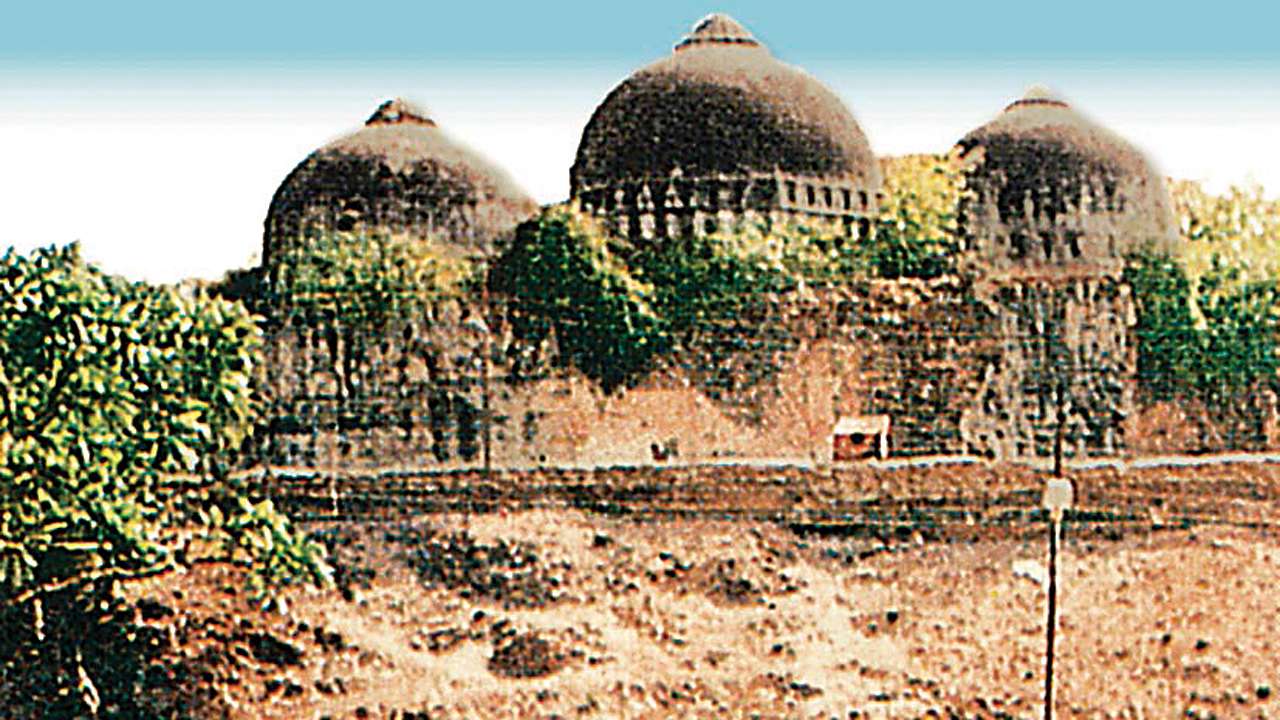
The Ram Janmabhoomi movement is a classic example of a majority community struggling for its religious rights, a place of its faith and the honour of its most revered icon. While the movement is more than four centuries old it concretised in early 1990s. The most fateful event in its trajectory was the demolition of the disputed structure, claimed as Babri mosque, on December 6, 1992.
This was a culmination of the Rath Yatra led by the BJP veteran leader L K Advani which can be described as one of the biggest people’s movements in India after its independence. Millions of citizens participated with a fervent desire that the birthplace of Bhagwan Ram should be liberated from the dispute.
One must understand that there is no communal tinge to the issue and nor is it intended to hurt the Muslim sentiment. The logic of the movement was based on the premise that Indian Muslims cannot be linked with aggressors who forcefully converted people, demolished temples and discriminated against Hindus.
Babar, a Sunni, whose lieutenant Mir Bakar, a Shia, demolished the Ram temple and built a mosque, cannot be an icon, an ideal, or a religious guide for the Muslims of India. The invaders came to India as aggressors and are an antithesis of the idea of Hindu civilization which never discriminated on the basis of faith. The importance of Hindus’ worldview can be understood when seen in the context of the Cheraman mosque in Kerala. In this instance, a temple was converted into a mosque by a Hindu king for privileging foreign Muslim traders to perform their religious practices. Therefore, linking ‘Muslim sentiment’ is a historic mistake which Muslim masses are increasingly realising. Voices from within the community speaking in favour of the temple have been emerging recently.
The Muslim sentiment of hurt and outrage that one sees today is a product of pseudo-secular politics and incessant fabrication by Marxist historians. These are the same intellectuals and historians who decried the Allahabad High Court judgment in 2009 which endorsed the view that there was a temple before the Babri mosque was built.
A group of 61 people belonging to this “intelligentsia” camp issued the statement without even bothering about the judgment or following the arguments that were presented in the 90-day trial on the issue. Now, 32 people from the same group have filed an intervention petition in the Supreme Court pleading that building an institution of public use at the site is ridiculous. They are members (in hiding)of the Babri Masjid Action Committee and all of them favour the rebuilding of Babri Mosque. Their position changed once the Archaeological Survey of India(ASI) released a report declaiming the argument that no temple was destroyed at the site.
The Ram Janmabhoomi movement has wider ramifications for the Indian political and cultural milieu. The issue has single-handedly changed the intellectual discourse in India and has exposed the theory and practice of secularism in India centered around the Muslim vote bank.
Much credit is due to the movement for enlarging the space of intellectual discourse on culture, secularism and the idea of India.
The dialogue is no longer confined to a small clique of elites. Active participation of the masses has, thankfully, changed the grammar of secularism as practiced in India.
The most visible change is evident in the realm of politics. The people of India have discarded political ideas and parties who have been staunchly opposed to the rebuilding of the Ram temple. The mandate of the people, in a way, is a rejection of politics of minority-ism, which essentially, is another name for pseudo-secularism. Presently, the BJP is the only national party which has taken an unambiguous position on the issue and has integrated itself as an inalienable part of the movement.
The Congress, on the other hand, has maintained an ambiguous stand as it wants the best of both the worlds. It is pro-Babri mosque but at the same time not against the temple. It fails to understand that Ram, besides being a religious figure, forms the centrality of the idea of Hindu civilization. The importance of Ayodhya and the birthplace of Ram cannot be summed up as a dispute on a piece of land. It is a larger issue that underpins the faith and belief structure of countless Hindus.
Pseudo seculars have over the years discarded the faith of the followers of Lord Ram in favour of an aggressor’s act. It was this anger that propelled Kar Sevaks to destroy the disputed structure. An ideal view and desire of the protagonists of the moment was to rebuild the temple and shift the structure to some other agreeable site. Stifled Hindu anger was a precursor that led to the demolition of the Babri Masjid. It was not directed against a mosque but was directed against a symbol of aggression.
The dispute can and should not be allowed to perpetuate for an unlimited period. The Supreme Court’s hearing gives hope that a solution might be in sight. Those who declaim Hindus’ right on Ayodhya are in fact prisoners of minority-ism and unwitting victims of RSS phobia. India’s pluralism and diversities have not been threatened by demolition on December 6, 1992 but by pseudo-secularism which defines the idea of India from the prism of the western ideas of secularism.
The author is founding Honorary Director of India Policy Foundation, a Delhi-based think tank. Views expressed are personal.